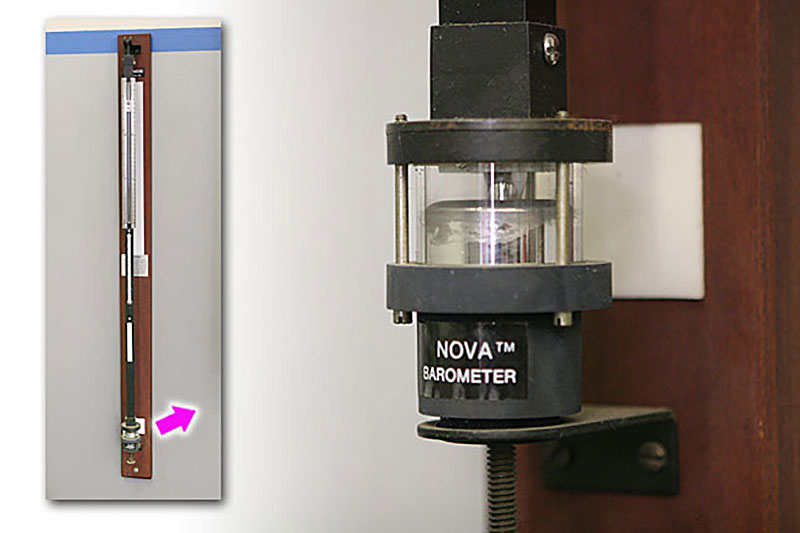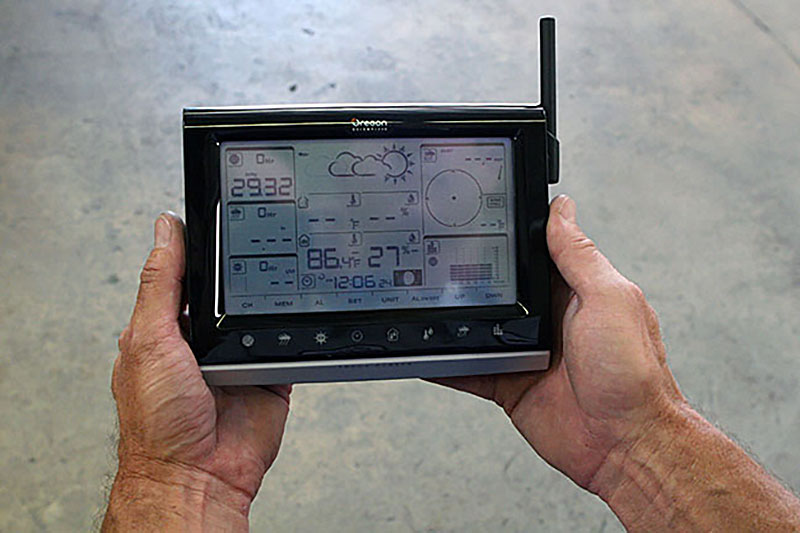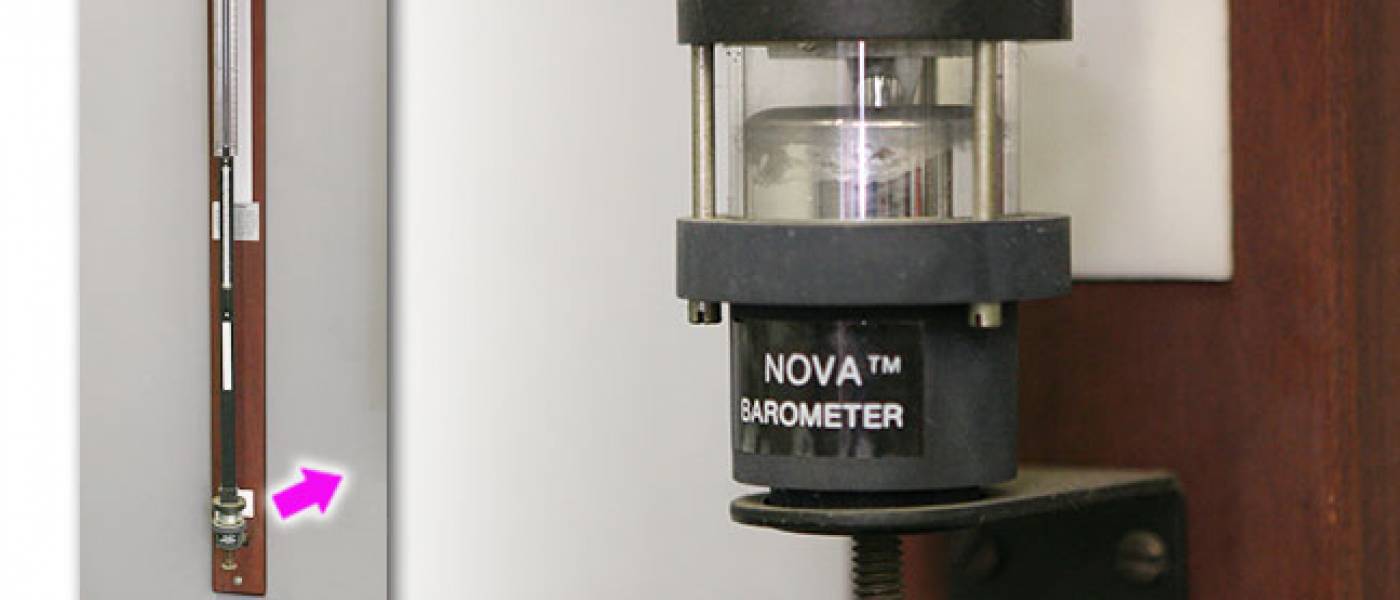Air Density – The Key to Making Power
Understanding air density explains why some air-flow products work better than others. It all has to do with air pressure, air temperature, and the relationship between them.
By John Stewart

You may have heard that professional drag race teams prefer cool, clear days-and sea-level altitudes. It’s the kind of situation that lets them tune for a little extra power. That’s because those conditions tend to increase air density. Whether we’re talking about gas or diesel performance, understanding air density is a key concept.
Changes in air density affect pilots, racers, and to some extent, practically everyone who drives. An obvious case is when a carbureted Jeep drives over a 13,000-foot pass in Colorado. With thin air at the top, the air/fuel ratio turns rich, fuel fouls the plugs and the engine won’t idle. Back at sea level, the engine runs fine.
More modern, fuel-injected engines have air mass sensors that look at temperature and air pressure, and account for altitude. The computer adjusts the air/fuel ratio accordingly, so your engine runs about the same regardless of changes in air density.
Racers, of course, study density intently, because it makes such a significant difference. Just because of minor seasonal weather variations, there are certain tracks, at certain times of the year, that tend to become venues for record-setting. And certain tracks that are always slow. Once again, that’s air density at work.
That’s why the weather conditions-atmospheric pressure, temperature and humidity-are important factors to account for when doing accurate dyno testing. All three affect air density.
Why does air density matter to the rest of us? Because denser air brings in more oxygen with every stroke, so fuel will burn better, or allow for burning more fuel in a given cycle, maintaining a proper and safe air fuel ratio.

What Is Air Density?
Air density is the mass per unit volume. It can be calculated using a formula that relates pressure and temperature, two key variables affecting air density.
As air flow (pressure) increases, density goes up. You can pack more air into a given space if you push it in with a turbo, supercharger, or ram-air system. But pressure alone does not make power. It’s the relationship between the two variables-temperature and pressure-that determines air density.
Logically, as temperature goes down, density increases. With colder air, it becomes possible to get more into a given volume. Anything that cools air, such as an intercooler, is essentially a density machine.
Interestingly enough, humidity does not increase density. In fact, the addition of water vapor crowds out some of the air molecules. So there is less air, and less oxygen, to use for burning fuel. When it comes to performance, increasing humidity reduces effective density.

So Why Do We Care?
Anyone interested in getting more out of a given engine-any combination of more power and better mileage-should be very interested in air density. It turns out there are effective ways to improve density, after which lots of good things can happen.
However, the need to optimize the combination of both pressure and temperature leads to interesting tradeoffs when it comes to designing tuning parts. Anything that increases air flow is a plus, but remember, that’s only part of the equation. The device lives and operates on the vehicle, not on the flow bench. If that air is taken from a hot location under the hood, then the potential gain in pressure could be offset by an increase in temperature. Our testing indicates that, as a general rule, if you can see the filter under the hood, it’s taking in hot, thin air from the engine compartment. Much better are setups that enclose the filter, ducted to bring in air from the outside.
A better-flowing filter also will not help if there are other restrictions downstream. A filter that transitions back into the stock intake will fail to improve airflow all the way in to the engine. And of course, if that filter doesn’t actually protect the engine, you’ve got another problem altogether. So the highest air flow doesn’t always lead to increased density, and could actually be a symptom of a filter that frankly doesn’t filter very well. The filter needs to increase density on the truck to be worth installing, not just on the airflow test bench.
Another way to increase pressure is to use a ram-air system that helps drive air through the intake system. A well-designed ram-air system can be highly effective, especially as ground speeds increase, by increasing pressure and optimizing air temperature at the same time. A good ram-air system needs to be properly shaped, made from materials that do not deform, and free of lumps or scabby surfaces on the interior. It should take air from where it is coolest-in front of the vehicle, at the right distance from the ground–and it should also include provisions that would prevent water from making it through the filter in wet weather.
So when it comes to bolt-on intake equipment, the optimum density improvement will occur when both temperature is reduced and pressure is increased. But addressing just one factor or the other won’t cut it. And all the while, the filter still has to be good enough do its job.
OEMs add density-i.e., increase pressure and reduce temperature–by using turbos and intercoolers. And they work. But there are costs involved, and the OEMs like to save a nickel anywhere they can. So that leaves room to add better equipment-like a better turbo, intercooler or better intake manifold–and end up with denser air.
So far we’ve been talking about using denser air to make more power. With a diesel, greater air density means you can add more fuel without increasing EGT or affecting emissions. More fuel equals more power.
But there is another possible benefit to greater air density. That would be better mileage. With more oxygen in every stroke, fuel burns more completely. Less fuel is needed to make equal power. The driver demands less throttle, the turbo doesn’t work so hard, and mileage improves. In short, with greater air density, overall efficiency can be improved.
So if you don’t use that dense air to add fuel and make power, a mileage gain becomes entirely possible. Bottom line is, denser air is an asset no matter what. How you exploit the benefit is up to you.

The Air Density Gauge
Unfortunately, right at the moment there is no convenient way to watch air density in real time as you drive your car or truck. There are gauges for boost, and you could probably set up separate gauges to look at incoming air temperature. That might kinda sorta give you a sense of what air density is doing, but not really.
Here at Banks Power, we study air density on the new intake products we develop. After confirming the CFD (computational fluid dynamics) simulations to dial-in the design, we make prototypes and run a fairly elaborate instrumented setup to judge the installed effect of newly-designed air flow parts like intercoolers, ram-air systems, filters, manifolds. We test them in combination, and one at a time. Sure enough, we find that whenever air density is improved, the dyno numbers can be improved by a like amount.
We do so much density testing that, in the end, Gale Banks actually came up with an instrument we call a density meter. It’s a single gauge that displays Intake Density (ID). Such a gauge might read out in units of ID compared to ambient. So if it displays 150 ID, that would show a 50 percent improvement in intake density. Or it could be set up to display actual corrected density with SAE sea level as 100, and say, the air in Denver as around 72 percent ID. Either way, we see it as a tool that can help a racer or enthusiast sort out how well his system is working and how to adjust air/fuel ratios given new equipment or new locations. And it could show if a given vehicle has been made better or worse by adding new air flow components. We don’t know why nobody thought of making a density gauge before, but it’s a patented design that you’ll hear about when it comes on the market.
For more about air density testing check out “Air Density Testing.”
To purchase a Banks Cold Air Intake System, click here for more info.

